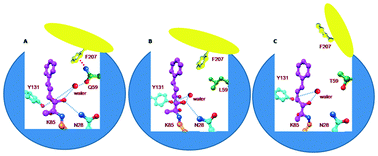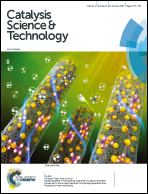Engineering of d-fructose-6-phosphate aldolase A for improved activity towards cinnamaldehyde†
Abstract
D-Fructose-6-phosphate aldolase A (FSAA) from Escherichia coli was engineered for enhanced catalytic efficiency towards cinnamaldehyde. The result implies that the site 59 residue possibly affects the activity of FSAA towards cinnamaldehyde through a residue interaction network rather than binding to the catalytic water as generally regarded.

- This article is part of the themed collection: 2017 Catalysis Science & Technology HOT Articles


 Please wait while we load your content...
Please wait while we load your content...